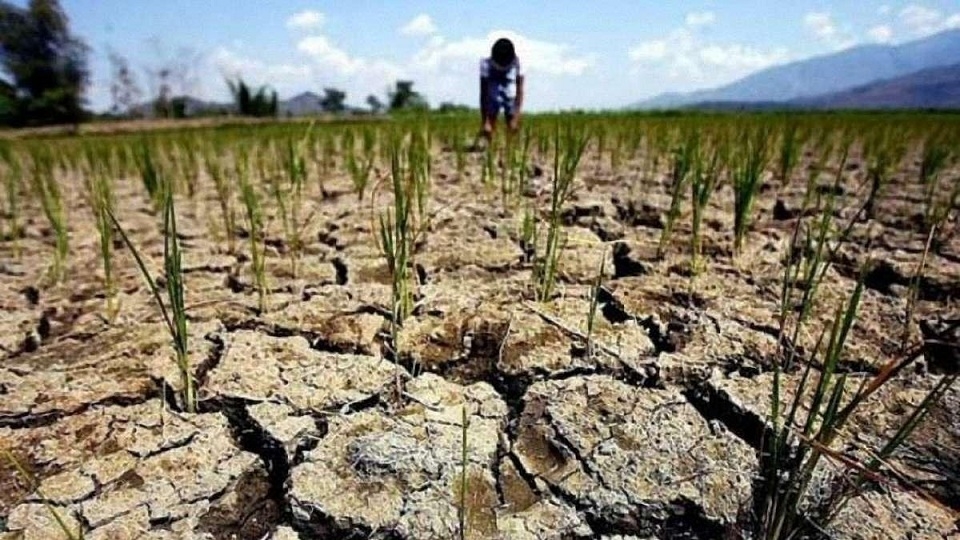Row-crop production concerns build in Argentina

The global trade is particularly concerned with Argentina, as the world’s leading exporter of soybean meal and soybean oil, and the third-largest international supplier of corn faces a dry weather outlook, falling crop ratings and declining production potential. Corn and soybean futures markets took a breather for most of last week, largely in anticipation of good weekend precipitation. The failure to materialise could quickly put a fire under bourse values this week.
Rainfall across much of Argentina’s summer cropping belt has been well below average since November, and the country’s farmers desperately require substantial widespread falls to boost soil moisture reserves, relieve plant stress and arrest production declines that have already started in many regions.
Argentina received heavy rains at the onset of the row crop seeding program, with November registrations around 30pc above the long-term average. The early soybean and corn crops were planted into good moisture, with excellent germination and plant establishment in most regions.
However, rainfall has been running well below average across much of the country ever since, with soil moisture declining rapidly and crop stress evolving just as quickly. The earlier planted crops with longer root systems may be able to draw some water from the subsoil, though plant available moisture at depth is also decreasing. The topsoil is too dry to support plant establishment and early season growth for the recently planted crops, substantially increasing production uncertainty and supporting underlying futures values.
The dry pattern is not surprising given the development of a La Niña weather event in recent months. A La Niña event occurs when the sea-surface temperatures in the South Pacific Ocean fall more than 0.5 degrees Celsius below normal, leading to hotter and drier conditions in South America, particularly in the south of the continent. La Niña-induced dry spells have recently damaged multiple Argentine row-crop harvests, most notably in 2023, which saw the smallest soybean harvest this century.
Many of the major forecasting models were in broad agreement that extensive rainfall would arrive over the weekend to provide some reprieve from the hot and dry conditions experienced over the past six weeks. But on the whole, they disappointed, with the falls very patchy and much less than forecast across much of the country’s row-cropping area.
The models are predicting a return to the dry weather pattern for much of the country for the balance of January, which does not bode well for crop yields. Argentina’s worst soybean harvests have a strong correlation with its driest Januarys. Good rainfall in February can rescue some of the yield loss, but a full recovery is improbable.
According to the latest weekly agricultural report from the Buenos Aires Grain Exchange (BAGE) released on January 15, soybean seeding had covered 98.2 percent of its 18.4 million hectare (Mha) forecast, an advance of 1.2 percentage points across the preceding week. BAGE rated 32pc of the soybean crop as good to excellent, down from 49pc a week earlier and 40pc for the same time last year. At the other end of the scale, 21pc of the crop area fell into the poor-to-very poor category, up from just 8pc last week and 9pc 12 months ago.
Demonstrating just how desperate the crop is for rain, 40pc of the soybean area had a moisture condition rating of poor to dry, up from 23pc on January 7 and 8pc in mid-January 2024. The optimum-to-favourable moisture rating fell from 77pc to 60pc week on week, well down on the 92pc rating at the same time in 2024. None of the planted soybean areas were rated as wet.
On the corn front, the 6.6Mha corn program was around 95.1pc completed by January 15, according to BAGE, with around 300,000ha in the northern agricultural area yet to be planted. The good-to-excellent proportion of the total planted area dropped three percentage points over the week to 39pc against 46pc a year ago. Conversely, the poor-to-very poor area jumped from 9pc on January 7 to 14pc on January 15 and 3pc this time last year.
Unsurprisingly, the soil-moisture ratings of the corn-cropped area slipped 13 percentage points week on week to be 64pc optimum to favourable, well down on the 92pc a year ago. The poor-to-dry area increased by the same amount to 36pc against just 5pc at the same time last year. Production estimates from BAGE currently sit at 50.6Mt and 50Mt for soybeans and corn respectively, against 50.2Mt and 49.5Mt last year.
The Rosario Grain Exchange (RGE) updated its 2024-25 row-crop production numbers on Wednesday of last week. It cut its corn output estimate to 48Mt off a harvested area of 6.5Mha, down from its previous guidance of 50-51Mt. The exchange pointed to extreme temperatures, low relative humidity and high levels of solar radiation as the main reasons behind its sharp forecast reduction, adding that these factors “have aligned negatively at the most critical moment for early corn.”
RGE also sees soybean output falling short of its December 2024 forecast of 53-53.5Mt but did not specify an updated figure. The exchange noted that the rainfall deficiency that had affected Argentina’s agricultural core for the past month will affect soybean yields, making them rule out “the high productivity scenarios that were considered until recently.” The second crop program, those areas planted into wheat stubble immediately after harvest, is particularly compromised having started life in totally depleted soil-moisture reserves.
Crop consultant Michael Cordonnier holds a far more optimistic soybean outlook of 52Mt, down 1Mt week on week; however, his bias is neutral to lower. This is in line with the USDA’s most recent number. Dr Cordonnier noted that the core row-crop areas of northern Buenos Aires and southern Santa Fe provinces had been hit the hardest by the dry weather, with the crops in those regions entering their critical reproductive phase and in desperate need of at least 25mm rain to maintain adequate growth.
He also holds a neutral-to-lower production bias for Argentina’s corn crop, clipping 1Mt off his estimate last week to currently stand at 49Mt. This is substantially lower than the USDA, which maintained its 51Mt forecast in its January global supply and demand update. The dry weather this summer has reportedly had a greater impact on corn potential than soybeans, with any paddocks planted since the beginning of November the hardest hit.
For almost 30 years of expertise in the agri markets, UkrAgroConsult has accumulated an extensive database, which became the basis of the platform AgriSupp.
It is a multi-functional online platform with market intelligence for grains and oilseeds that enables to get access to daily operational information on the Black Sea & Danube markets, analytical reports, historical data.
You are welcome to get a 7-day free demo access!!!
Read also
Official Release – December 17th! Crop & Price Navigator 2026/27
Analysts CoBank believe that commodity prices have already passed cyclical lows
Market doubts China’s ability to meet commitments on US soybean purchases
New EU crop forecasts for 2026
Palm oil exports from Malaysia fell by 16% in December
Write to us
Our manager will contact you soon



